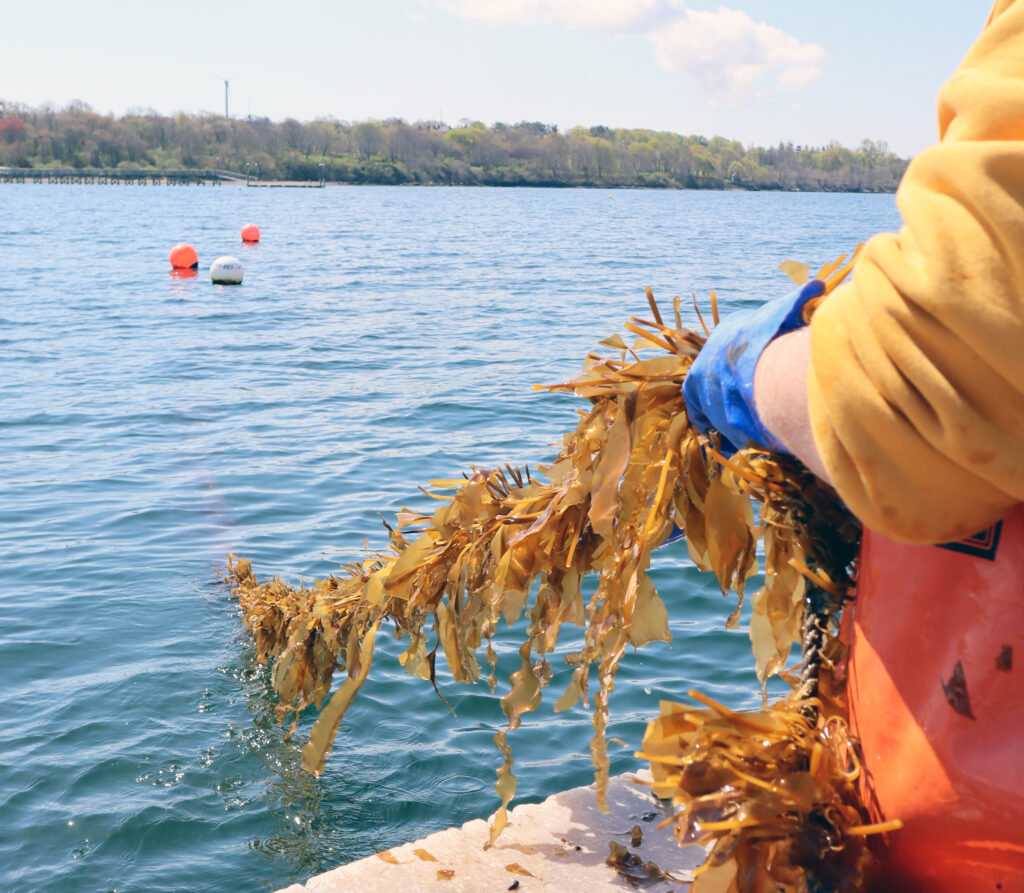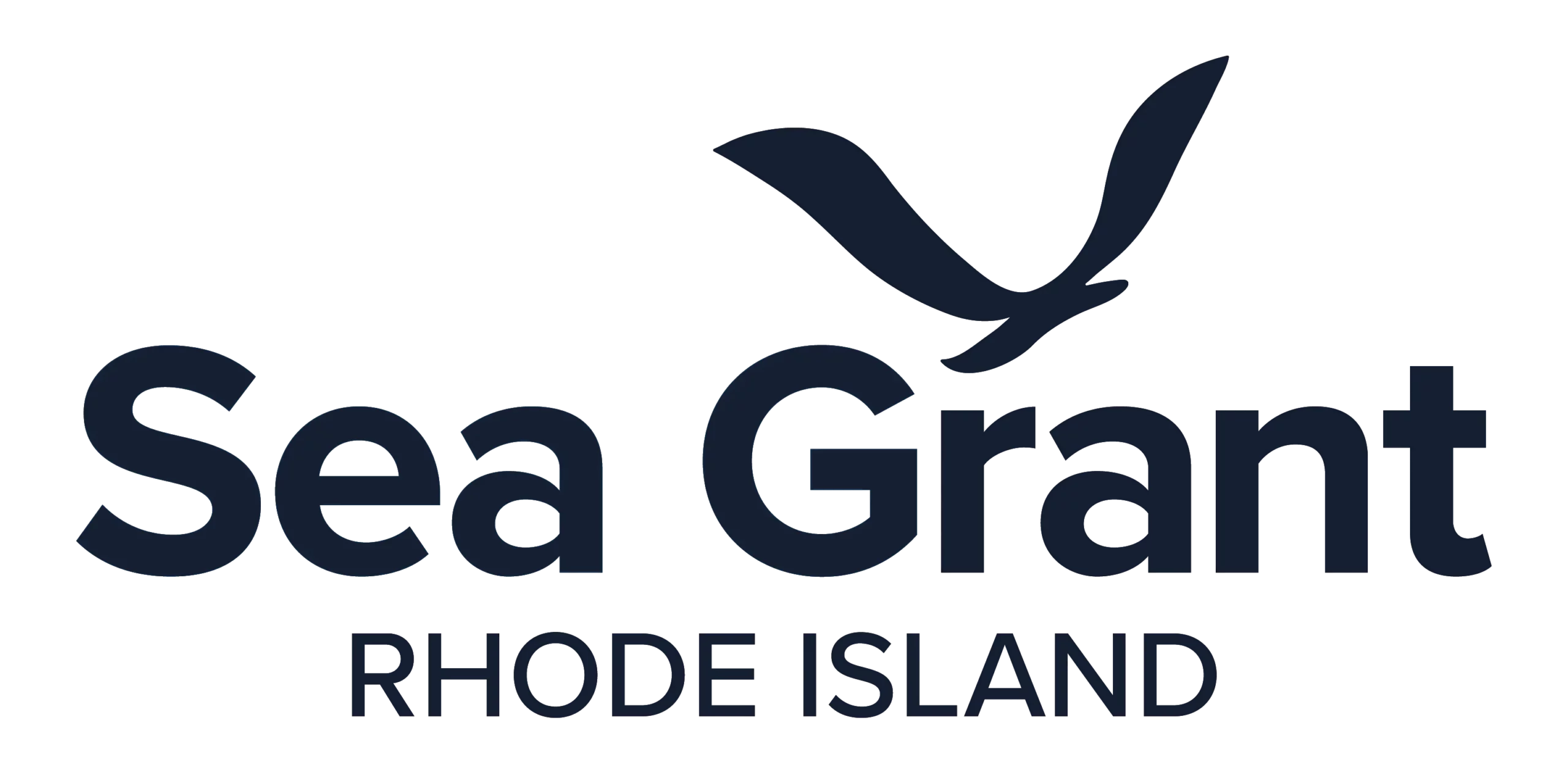Webinar explores how – and why – to get into this growing industry
Seaweed is used in everything from salad and nutritional supplements to personal care products to fish feed and even beer. Researchers are exploring its potential as a biofuel and a methane-reducing cattle feed. And it’s a crop that oyster farmers and lobster harvesters can grow in their offseason to provide steady revenue and employment.
Most seaweed consumed in the U.S. is imported from Asia, though, and the U.S. industry is still in its early stages with all the challenges facing a nascent startup. In the Northeast, seaweed can be grown beginning in November and must be harvested in the spring (exact dates vary by state). However, flooding the market all at once with seaweed can drive prices down. But there is not a readily available processor in southern New England who can turn raw seaweed into a shelf-stable product.
That may be one reason that while 10 Rhode Island aquaculturists have permits to grow seaweed, there are only three active farms. Based on the attendance at a recent presentation on growing seaweed by Anoushka Concepcion, associate extension educator focusing on marine aquaculture with Connecticut Sea Grant, and Rob Hudson, fisheries and aquaculture specialist with the URI Coastal Resources Center and Rhode Island Sea Grant, there is interest in exploring the possibilities.

Sugar kelp is one of the main types of seaweed cultivated in the Northeast. “Seaweed Aquaculture in Rhode Island” explains the ins and outs of growing seaweed and how to add it to an existing aquaculture farm.
Concepcion described some of the resources available from the National Seaweed Hub, a collaborative project of 12 Sea Grant programs, including information about how to grow seaweed and dry it, as well as seafood safety as it applies to seaweed.
Hudson described the biology of seaweed and provided illustrations of how some oyster farms have incorporated growing seaweed in conjunction with their oyster gear, noting that the permitting process for both types of aquaculture is the same, so oyster growers are primed to add seaweed to their existing operations. He also shared a video demonstrating how to set the lines with the seed to begin the growing process, and talked about maintaining the lines and how much growers could expect to harvest per foot of line.
Learn More
Be sure to check out this one-hour video if growing seaweed and its potential marketability are something you would like to learn more about: Aquaculture Deep Dive 3: Seaweed Aquaculture in Rhode Island.
Aquaculture Deep Dive 1: Aquaculture in RI’s Shared Waters and Aquaculture Deep Dive 2: Reducing Shared Use Conflicts are also available on the Rhode Island Sea Grant YouTube channel.
These webinars are intended to educate bay users across Rhode Island about aquaculture as part of the Narragansett Bay Special Area Management Plan. For more information, contact Azure Cygler.
